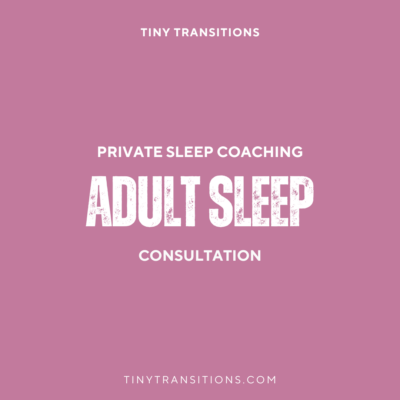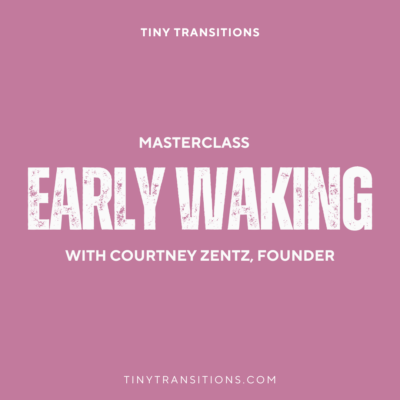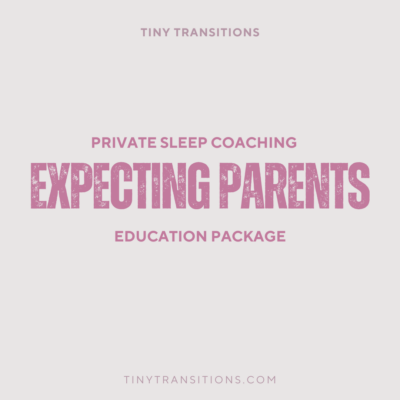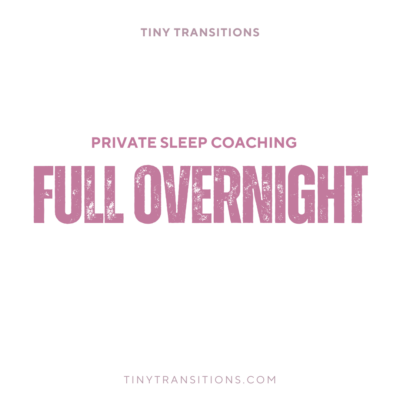When people hear the phrase “Cry It Out Method,” they usually think of babies crying themselves to sleep. Technically, Cry It Out is more of an umbrella term that encompasses several different sleep training techniques, though the two most common are Unmodified Extinction and Graduated Extinction (generally called The Ferber Method).
For the sake of this article, the Cry It Out Method is going to refer to the Unmodified Extinction method of sleep training. In this method, parents let their babies cry themselves to sleep without parental intervention. The goal is to help the babies learn how to self-soothe so that they can go back to sleep without their parents help when they wake in the middle of the night.
You might not know it, but all people – babies, children, and adults – wake up several times during the night, though they don’t remember it most of the time. Nighttime wakings aren’t generally a problem because people go back to sleep almost immediately, but for babies who can’t put themselves back to sleep, it becomes a big issue for both the baby and the rest of the family.
Pros and Cons
As with every other sleep training method, there are pros and cons to choosing the Cry It Out Method. This is not an exhaustive list by any means, but it should give you a good idea of what you’re getting into.
Pros:
- It’s fast: If you want to sleep train very quickly, and you don’t mind the tears, the CIO sleep method is probably the speediest way to sleep train of all the options. Most parents see results between three and seven days, but many parents report positive changes after the first night.
- It teaches your baby valuable skills: Self-soothing and independence are critical life skills that your baby has to learn sooner or later. Learning them through monitored sleep training can help them develop those skills quickly.
Cons:
- It’s hard on parents: Even when you’re trying to do a good thing, listening to your baby cry is hard to do. In some circumstances, it can even make your own body physically ache in addition to the emotional toll it can have on you. The upside of things is that it’s likely much harder on you than it is on your baby.
- Some babies can get very upset: It’s possible, though uncommon, that a baby can get so upset that she throws up. If your baby tends to throw up when upset, it’s a good idea to choose a gentler sleep training approach altogether or stay nearby with a video monitor on her.
How to be Effective
Sleep training of any kind can be challenging, but by following a few basic rules, you set yourself and your baby up for a better chance of success.
- Prevent Overtired
The number one thing that prevents parents from successfully sleep training is that their baby is overtired before they even start. Babies that are too tired have a harder time going down, and they often wake more often than babies who aren’t overtired. To prevent overtired, be mindful of your baby’s awake windows, how much sleep she needs for her age, and her sleep cues. You don’t want to start sleep training at night if your baby is overtired, so in the beginning, start by doing whatever you need to do to ensure great naps during the day. Then, when it’s time to sleep train at night, your baby will be ready to go. Once you have nighttime sleep training going pretty well, you can incorporate naptime sleep training as well.
- Be Conscious of Awake Windows
This point goes hand-in-hand with preventing overtired. Once your baby hits about four months old, her body produces several different sleep-related hormones throughout the day. Adenosine is one such hormone that increases during your “awake window” until you feel tired and ready for a nap or bed. Ignoring that so-called “sleep pressure” often results in a second wind that gets you (or your baby) ramped up for another go of things even though the body is technically still tired enough to sleep.
These awake windows change as your baby grows, so you need to be conscious of that and adjust your baby’s schedule to accommodate recommended naptimes and durations. Putting down your baby for a nap too early or too late yields poor naps and lots of midnight waking. Making sure your baby gets enough sleep during the day will help her get better sleep at night.
- Don’t Start During Major Life Events
Babies are creatures of habit, which is why sleep training is difficult in the first place. When there are changes in their lives, they can make everything that much more challenging. If you can anticipate a change in the near future (such as teething, moving, new people or animals in the home, or sickness), it’s best to postpone sleep training a little longer.
- Stick to Your Guns
Sleep training can be tricky, but one mistake that many parents make is not trying long enough. Notice that we didn’t say hard enough – we said long enough. Those first few nights of doing the Cry It Out Method can be brutal for parents, but it’s important to give your baby at least three nights of training before you pause and try something else. Your baby is new to learning how to do things, and she’s confused why you aren’t helping her sleep the way you used to. You have to give her a few days to learn that you are still there and that she can successfully fall asleep on her own. If you don’t see any improvement after three days, feel free to pause and try again in a few weeks or with a different method.
- Be Consistent
Once you start sleep training with the CIO Method, you need to be consistent, consistent, consistent! Don’t offer any external aid even if you know your baby will fall asleep in 15 seconds if you just went in and helped. Once you get the hang of things, always use the method for both naps and bedtime, and be sure to put your baby down when she is awake every time. Cuddling your baby to sleep is a bonding experience for both you and your baby, but when you are actively sleep training, you need to be firm and consistent in putting your baby down awake.
- Have a Good Routine
Having a good, consistent bedtime and naptime routine is a key to success when you use the Cry It Out sleep method. You might need to modify your bedtime routine a little bit to get in as many snuggles as you can outside of the bedroom. Read books, sing songs, nurse/feed, and cuddle when your baby is awake but sleepy. Keeping the room dark, using a sound machine, and offering infant massage are all things that you can add to your baby’s bedtime routine to help increase the success rate of sleep training.
Myths about Cry It Out
Myths abound where sleep training is concerned, so we wanted to address a few of them here. For the most part, the myths are unfounded or backed by research with a shaky foundation.
Cry It Out is the only way to go.
Many people swear by this method, but, as we’ve pointed out above, it has its drawbacks. It may not be the right approach for you or your baby, and it’s certainly not the only approach. Our Tiny Transitions sleep consultants can help you discover alternate methods that are gentler and more flexible.
My baby won’t love me anymore if I let her cry it out.
We addressed this myth and others in this blog post, but it’s worth rehashing here: your baby will still love you if you use the Cry It Out Method for sleep training. You provide so much other love and service for your baby throughout the day, and she recognizes that. Your baby isn’t crying because she hates you – she’s crying because she’s experiencing a new way of going to sleep. She’s confused why you aren’t helping her the way you used to, but she’s not angry with you, no matter how many tears she sheds.
I’m causing permanent damage by letting my baby cry.
This myth is perhaps the single biggest turn-off for parents who are considering the Cry It Out Method. There is a widely cited study that concluded that letting your baby Cry It Out caused emotional and psychological damage to the baby, but that study sampled a small number of babies and wasn’t replicated – two factors necessary to show that the results weren’t a fluke. Since that study was published, several other studies on sleep training children using both the unmodified extinction method and graduated extinction methods show no short or long-term damage.
Once I start it, I have to stick to it until my baby is sleep trained – no matter what.
The truth is, the CIO sleep method isn’t the best choice all the time or for all babies. Many babies respond well to the Cry It Out method, but many babies do not. It all depends on your personality and tolerance for crying, your goals (fewer tears/longer sleep training transition or more tears/faster sleep training as two potential goals), and your baby’s personality, tolerance, and life experience so far.
We recommend picking a sleep training method and sticking with it for at least three days. If you see minimal or no improvement, pause for a couple of weeks and try again. If you want to try sleep training again with a different method, that’s your prerogative as a parent. If you want to tweak a few different sleep training methods to fit your child’s needs better, do it! There isn’t a right or wrong answer for every child, so you have to find what works best for everyone in your family.
Is the Cry It Out Sleep Method right for me and my baby?
This sleep method isn’t the best fit for some babies, so you need to be prepared to modify your approach once you begin. That said, if you don’t mind tears and crying for several nights in a row, the CIO method might be good for you to try. It’s a more aggressive program for people who are at their wit’s end and would like a good night’s sleep as quickly as possible.
It’s always best to touch base with your baby’s pediatrician before you start sleep training. If you keep hitting a wall with sleep training, there may be something on the medical side of things that is preventing your baby from sleeping well (for example: sleep apnea or acid reflux). These undiagnosed problems could be especially problematic if you try to power through using the CIO sleep method. If you suspect the problem to be something larger or your gut tells you to stop sleep training and try again in a week or so, you need to do what’s best for you and your baby.
As one of the country’s leading sleep training companies, we’ve helped thousands of little ones sleep through the night with customized approaches that work for all different kinds of families. If you’ve tried Cry it Out and it’s not working—or if you want to try something gentler from the get go—we can help you understand and execute different options. Contact our team of pediatric sleep consultants to get your family’s sleep schedule back on track in just the right way.










